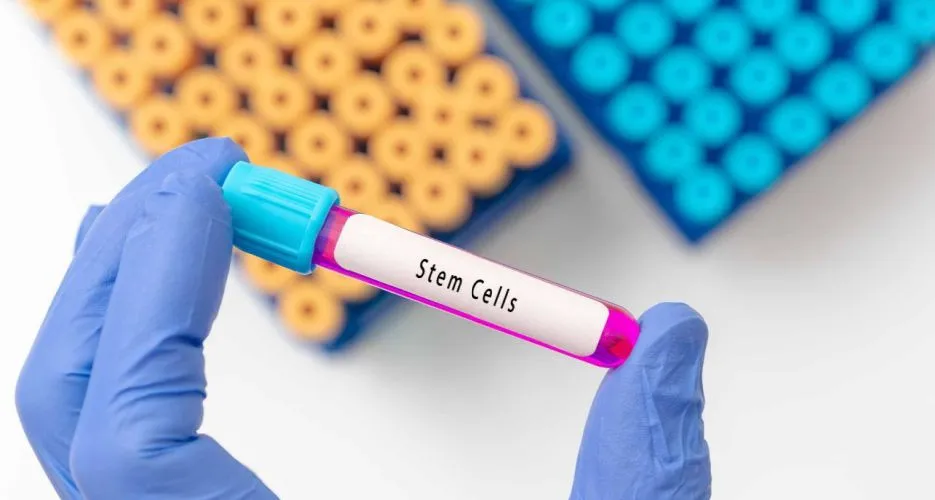Why Does Early Intervention in Myelofibrosis Matter?

Myelofibrosis (MF) is an advanced myeloproliferative neoplasm (MPN), a rare blood cancer occurring in 2 to 4 people per 100,000 worldwide and from 4 to 6 people per 100,000 within the United States.
People with myelofibrosis can have several significant side effects, leading to a lower quality of life. Some of these side effects include anemia, fatigue, an enlarged spleen (causing the feeling of fullness or discomfort), and/or an enlarged liver, night sweats, bone pain, and itchiness.
People with myelofibrosis often have a shorter lifespan compared to others.
Classifying Myelofibrosis (MF)
To talk about the importance of early intervention in MF, you need first to understand the different ways it can be classified.
Myelofibrosis is compromised of two disease subtypes:
- Primary MF (PMF)
- Secondary MF
Secondary MF occurs when essential thrombocytopenia or polycythemia vera evolve into myelofibrosis. For more information on secondary myelofibrosis, read here: What Are the Types of Secondary Myelofibrosis?
Primary MF will be the main focus of this article. In 2016, the World Health Organization (WHO) reclassified primary myelofibrosis into two parts:
- prefibrotic/early-stage PMF (pre-PMF)
- overtly fibrotic PMF (overt-PMF)
Overt-PMF can be classified into different risk-level stages: low, intermediate (int-1/int-2), and high risk.
The term 'early MF' can be confusing in academic literature because it is used in different ways. Some researchers use it to refer to the pre-PMF stage, while others mean the low-risk stage of overt-PMF.
This article will discuss early intervention in overt-PMF.
How is Primary Myelofibrosis Typically Treated?
In many cases, the treatment of low-risk MF includes supportive care and observation, while higher-risk cases qualify for JAK inhibitors, such as ruxolitinib (Jakafi, Novartis/Incyte Corp) or pacritinib (Vonjo, CTI BioPharma), and/or allogeneic stem cell transplantation.
The treatment paradigm for myelofibrosis is different than many other blood cancers, as allogeneic stem cell transplant is the only curative-targeted therapy for patients. Still, many patients do not qualify for it due to advanced age or other comorbidities, which means that for the majority of myelofibrosis patients, therapy options are used only for palliative-type care (symptom reduction, for example) and do not focus on preventing disease progression.
Considerations for Early Intervention in Low-Risk Myelofibrosis
Currently, low-risk myelofibrosis supportive care can include medications that help the body produce more red blood cells (erythropoiesis-stimulating agents) and others that stimulate the bone marrow to produce more white blood cells/neutrophils (granulocyte colony-stimulating factors), transfusions, danazol (a hormone-affecting steroid) and immunomodulatory treatments.
Normally, people with early-stage myelofibrosis are told to watch and wait for disease progression. While some people with myelofibrosis can quickly progress from pre-PMF to overt-PMF, indicating a high-risk disease, some patients can live for years without significant symptom burden.
For those with few symptoms and low-risk genetics, treatment for myelofibrosis may present more side effects than the disease itself. However, treatment could still be beneficial if it leads to increased overall survival.
- People with low-risk genetics may experience more side effects from treatment than from myelofibrosis.
- Despite this, treatment could offer an advantage by potentially increasing life expectancy.
In other cases, individuals with low-risk myelofibrosis may experience debilitating symptoms that make the treatment necessary to control their disease and potentially improve their prognosis.
- Some with low-risk myelofibrosis may still have severe symptoms that impact quality of life.
- For these patients, treatment can help manage symptoms and possibly alter the disease course.
What Are the Benefits of Early Intervention in Myelofibrosis?
When active treatment is given to myelofibrosis patients within 12 months of their diagnosis, they have significantly lived longer and experienced fewer disease symptoms than those who receive treatment later.
Benefits of early intervention and treatment include:
- Fewer cytopenias (less anemia/low blood counts)
- Improvement in spleen reduction
- Longer overall survival
Patients who start treatment earlier experience higher responses to the treatment and lower toxicity than people starting treatment in a more advanced stage of myelofibrosis.
Another benefit to earlier treatments is that they can better position patients to remain at an optimal dose for longer periods of time.
What Are Challenges to Early Intervention in Myelofibrosis?
When you decide to start treatment for myelofibrosis at earlier stages, such as pre-PMF or low-risk MF, there are a few important factors to consider.
First, it’s crucial to get an accurate diagnosis of your myelofibrosis stage. A 2020 study found that about 40% of patients are misclassified in terms of risk, and an additional 30% don't receive any risk categorization at all.
Once your myelofibrosis is correctly diagnosed, the next step is to set clear treatment goals. Consider whether the symptoms of myelofibrosis significantly affect your quality of life and whether you’re aiming for a longer life span.
Ultimately, it is up to the individual and their provider to decide whether or not to move forward with treatment.
Notably, Dr. Prithviraj Bose, an MD Anderson lymphoma doctor specializing in myelofibrosis, shares,
“There is little to no benefit to delaying active treatment in patients with symptomatic lower-risk… MF.”
Future Outlook and Conclusion
Thankfully, there are many active clinical trials enrolling low-risk myelofibrosis patients in their cohorts. Subanaylses of these populations within those trials can continue to reveal more about how to move forward with earlier treatment in low-risk and pre-fibrotic primary myelofibrosis.
While earlier intervention does take careful consideration on part of the healthcare provider, it can have significantly positive effects on those with low-risk myelofibrosis and should be seriously considered for those patients who are interested in being treated.
If you would like to learn more about myelofibrosis risk stratification or prognosis, check out our HealthTree 101 below:
- How Long Will I Live With Myelofibrosis?
- How is Myelofibrosis Staged and Classified?
- What are Treatments for Myelofibrosis?
Sources:
- SOHO State of the Art Updates and Next Questions | Early Intervention in Myelofibrosis: Where Are We and Does It Matter?
- Management of Patients with Early Myelofibrosis: A Discussion of Best Practices
- What Are the Types of Secondary Myelofibrosis?
- Safety and efficacy of ruxolitinib in an open-label, multicenter, single-arm phase 3b expanded-access study in patients with myelofibrosis: a snapshot of 1144 patients in the JUMP trial
- Long-term survival in patients treated with ruxolitinib for myelofibrosis: COMFORT-I and -II pooled analyses
- Real-world risk assessment and treatment initiation among patients with myelofibrosis at community oncology practices in the United States
Myelofibrosis (MF) is an advanced myeloproliferative neoplasm (MPN), a rare blood cancer occurring in 2 to 4 people per 100,000 worldwide and from 4 to 6 people per 100,000 within the United States.
People with myelofibrosis can have several significant side effects, leading to a lower quality of life. Some of these side effects include anemia, fatigue, an enlarged spleen (causing the feeling of fullness or discomfort), and/or an enlarged liver, night sweats, bone pain, and itchiness.
People with myelofibrosis often have a shorter lifespan compared to others.
Classifying Myelofibrosis (MF)
To talk about the importance of early intervention in MF, you need first to understand the different ways it can be classified.
Myelofibrosis is compromised of two disease subtypes:
- Primary MF (PMF)
- Secondary MF
Secondary MF occurs when essential thrombocytopenia or polycythemia vera evolve into myelofibrosis. For more information on secondary myelofibrosis, read here: What Are the Types of Secondary Myelofibrosis?
Primary MF will be the main focus of this article. In 2016, the World Health Organization (WHO) reclassified primary myelofibrosis into two parts:
- prefibrotic/early-stage PMF (pre-PMF)
- overtly fibrotic PMF (overt-PMF)
Overt-PMF can be classified into different risk-level stages: low, intermediate (int-1/int-2), and high risk.
The term 'early MF' can be confusing in academic literature because it is used in different ways. Some researchers use it to refer to the pre-PMF stage, while others mean the low-risk stage of overt-PMF.
This article will discuss early intervention in overt-PMF.
How is Primary Myelofibrosis Typically Treated?
In many cases, the treatment of low-risk MF includes supportive care and observation, while higher-risk cases qualify for JAK inhibitors, such as ruxolitinib (Jakafi, Novartis/Incyte Corp) or pacritinib (Vonjo, CTI BioPharma), and/or allogeneic stem cell transplantation.
The treatment paradigm for myelofibrosis is different than many other blood cancers, as allogeneic stem cell transplant is the only curative-targeted therapy for patients. Still, many patients do not qualify for it due to advanced age or other comorbidities, which means that for the majority of myelofibrosis patients, therapy options are used only for palliative-type care (symptom reduction, for example) and do not focus on preventing disease progression.
Considerations for Early Intervention in Low-Risk Myelofibrosis
Currently, low-risk myelofibrosis supportive care can include medications that help the body produce more red blood cells (erythropoiesis-stimulating agents) and others that stimulate the bone marrow to produce more white blood cells/neutrophils (granulocyte colony-stimulating factors), transfusions, danazol (a hormone-affecting steroid) and immunomodulatory treatments.
Normally, people with early-stage myelofibrosis are told to watch and wait for disease progression. While some people with myelofibrosis can quickly progress from pre-PMF to overt-PMF, indicating a high-risk disease, some patients can live for years without significant symptom burden.
For those with few symptoms and low-risk genetics, treatment for myelofibrosis may present more side effects than the disease itself. However, treatment could still be beneficial if it leads to increased overall survival.
- People with low-risk genetics may experience more side effects from treatment than from myelofibrosis.
- Despite this, treatment could offer an advantage by potentially increasing life expectancy.
In other cases, individuals with low-risk myelofibrosis may experience debilitating symptoms that make the treatment necessary to control their disease and potentially improve their prognosis.
- Some with low-risk myelofibrosis may still have severe symptoms that impact quality of life.
- For these patients, treatment can help manage symptoms and possibly alter the disease course.
What Are the Benefits of Early Intervention in Myelofibrosis?
When active treatment is given to myelofibrosis patients within 12 months of their diagnosis, they have significantly lived longer and experienced fewer disease symptoms than those who receive treatment later.
Benefits of early intervention and treatment include:
- Fewer cytopenias (less anemia/low blood counts)
- Improvement in spleen reduction
- Longer overall survival
Patients who start treatment earlier experience higher responses to the treatment and lower toxicity than people starting treatment in a more advanced stage of myelofibrosis.
Another benefit to earlier treatments is that they can better position patients to remain at an optimal dose for longer periods of time.
What Are Challenges to Early Intervention in Myelofibrosis?
When you decide to start treatment for myelofibrosis at earlier stages, such as pre-PMF or low-risk MF, there are a few important factors to consider.
First, it’s crucial to get an accurate diagnosis of your myelofibrosis stage. A 2020 study found that about 40% of patients are misclassified in terms of risk, and an additional 30% don't receive any risk categorization at all.
Once your myelofibrosis is correctly diagnosed, the next step is to set clear treatment goals. Consider whether the symptoms of myelofibrosis significantly affect your quality of life and whether you’re aiming for a longer life span.
Ultimately, it is up to the individual and their provider to decide whether or not to move forward with treatment.
Notably, Dr. Prithviraj Bose, an MD Anderson lymphoma doctor specializing in myelofibrosis, shares,
“There is little to no benefit to delaying active treatment in patients with symptomatic lower-risk… MF.”
Future Outlook and Conclusion
Thankfully, there are many active clinical trials enrolling low-risk myelofibrosis patients in their cohorts. Subanaylses of these populations within those trials can continue to reveal more about how to move forward with earlier treatment in low-risk and pre-fibrotic primary myelofibrosis.
While earlier intervention does take careful consideration on part of the healthcare provider, it can have significantly positive effects on those with low-risk myelofibrosis and should be seriously considered for those patients who are interested in being treated.
If you would like to learn more about myelofibrosis risk stratification or prognosis, check out our HealthTree 101 below:
- How Long Will I Live With Myelofibrosis?
- How is Myelofibrosis Staged and Classified?
- What are Treatments for Myelofibrosis?
Sources:
- SOHO State of the Art Updates and Next Questions | Early Intervention in Myelofibrosis: Where Are We and Does It Matter?
- Management of Patients with Early Myelofibrosis: A Discussion of Best Practices
- What Are the Types of Secondary Myelofibrosis?
- Safety and efficacy of ruxolitinib in an open-label, multicenter, single-arm phase 3b expanded-access study in patients with myelofibrosis: a snapshot of 1144 patients in the JUMP trial
- Long-term survival in patients treated with ruxolitinib for myelofibrosis: COMFORT-I and -II pooled analyses
- Real-world risk assessment and treatment initiation among patients with myelofibrosis at community oncology practices in the United States

about the author
Audrey Burton-Bethke
Audrey is a content writer and editor for the HealthTree Foundation. She originally joined the HealthTree Foundation in 2020. Audrey loves spending time with her supportive husband, energetic four-year-old, and new baby.
More on Treatment Advances
Trending Articles
Get the Latest Myelofibrosis Updates, Delivered to You.
By subscribing to the HealthTree newsletter, you'll receive the latest research, treatment updates, and expert insights to help you navigate your health.
Together we care.
Together we cure.
3x Faster.










